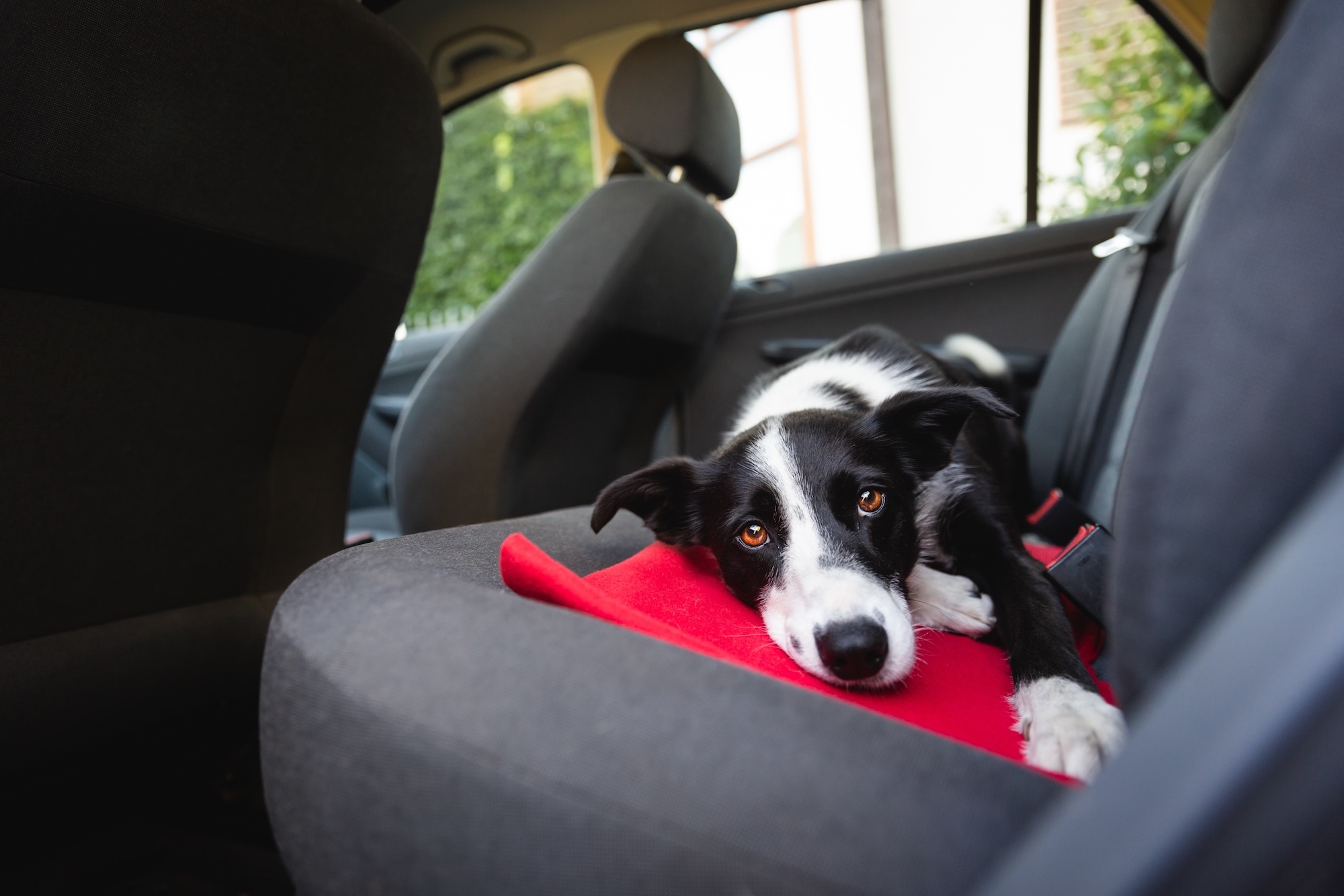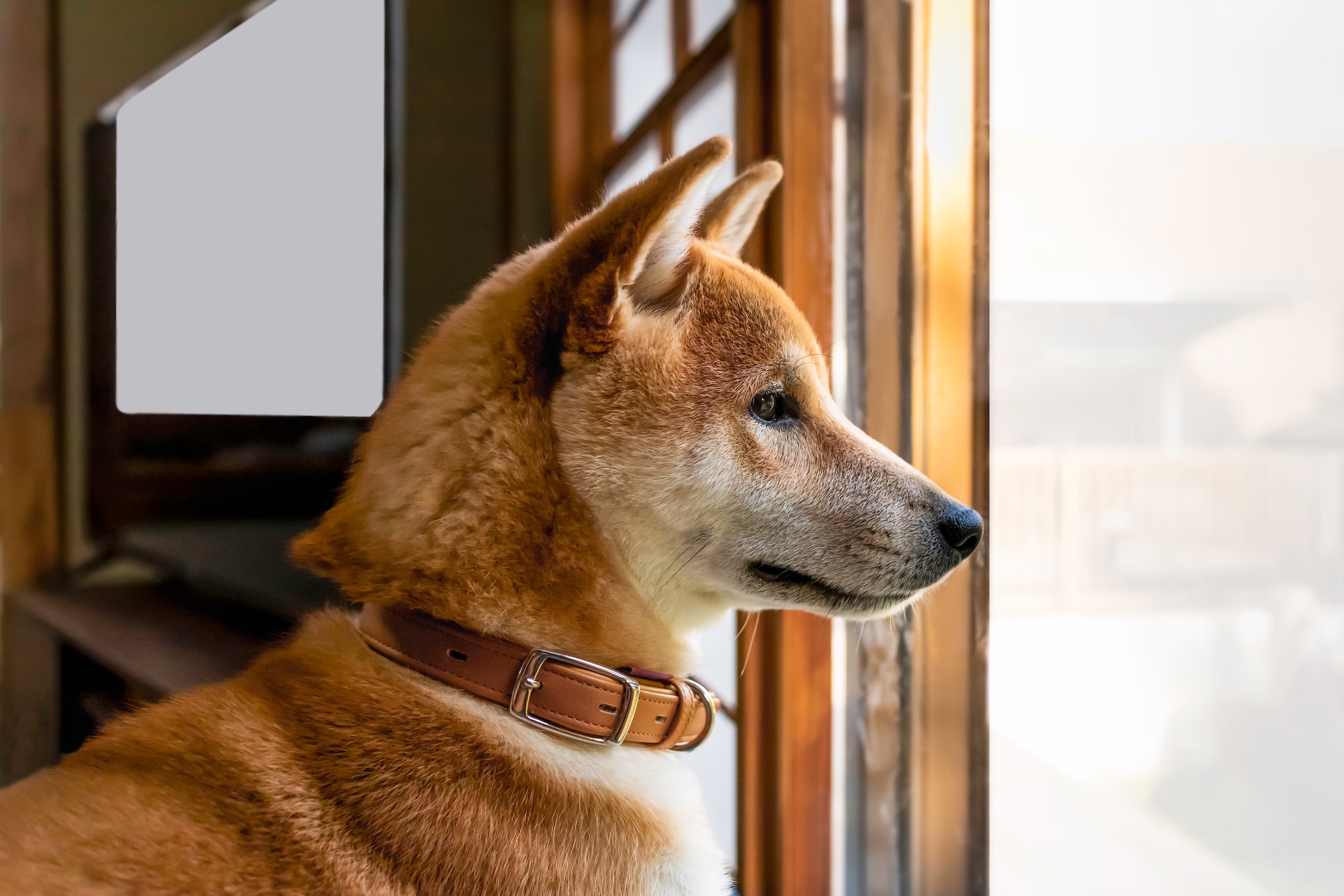When it comes to taking care of your new family member, there’s a lot to learn, and it can be hard to know where to start, what with all the gear to buy, the shoes to put away, and the skills to start teaching. But first, there are health and safety questions to address to build the healthiest foundation for your pup. We know how overwhelming it can feel, so we assembled some key information to help puppy owners navigate this critical period.
First, a high-quality, diet and weight maintenance
Good nutrition is essential for a growing puppy. It’s an important time in their life when their bodies are developing, so fueling that growth with high quality nutrition is key. Healthy food, in the right amount, is also an important part of preventing obesity, which leads to conditions like osteoarthritis, diabetes, heart disease, different types of cancers, and even premature death.
We recommend feeding a high-quality, fresh diet that’s made to fuel puppies’ growth and development. Plan on feeding your puppy three times a day up to about six months, after which you can transition to once or twice daily (and stick with that through the adult years).
Read more about feeding your puppy here.
Weight management is important, even for puppies. A rotund puppy may be endearing, but, after a certain age, that pudginess could be a sign that your dog is overweight.
Before four months, your puppy may not have a defined waist, and may have a rounder belly, and other marks of a healthy, fast-growing pup. A puppy’s body weight often doubles by eight to 10 days after birth.
After four months, you can begin keeping track of their body condition using a simple body condition test. You should be able to feel your pup’s ribs easily with only a small layer covering them, but you shouldn’t be able to see them. Also, most dog breeds should have an hourglass shape when viewed from above. If the shape is more like a rectangle, they are overweight. While these techniques work for most breeds, some dogs, like French bulldogs and English bulldogs who have a lot of extra skin may be harder to evaluate this way.
Read more about measuring body condition here.
The veterinarian: Your puppy’s primary health provider
Your dog’s veterinarian will be an important partner in keeping your dog healthy throughout their life. Here’s what you need to know about this important relationship.
Your puppy’s first visit
Veterinarians recommend setting up your puppy’s first appointment within a week of adoption. After that first visit, “depending on when we first see the puppy, we generally recommend three exams by 16 weeks of age,” says Dr. Susan Jeffrey, a veterinarian at Truesdell Animal Care Hospital in Madison, Wisconsin. Owners can expect to go to the vet every three to four weeks until their puppy vaccine series is complete. This can change depending on location since some vaccine recommendations are region-specific.
Having a veterinarian in place prior to adoption can alleviate some of the stress. One place to start your search is the American Animal Hospital Association (AAHA), a veterinary accrediting organization.
What to expect at the first visit
Aside from performing a full physical examination, your veterinarian will discuss a wide range of topics related to your puppy’s care.
“We discuss a ton of information,” says Jeffrey. “This includes vaccine protocols, deworming, puppy training classes, nutrition, house training, and the importance of spay/neuter and the best time to do that. We also discuss microchips, flea and tick and heartworm prevention as well as how to integrate a new puppy into a home if other pets are present.”
Types of questions to ask your veterinarian
The first appointment is an ideal time to ask about topics like diet, parasite prevention (like fleas, tick, and heartworm), exercise, and what to do in case of an emergency.
Other questions Jeffrey recommends asking include:
- When should I start my puppy in training classes?
- What do you think about dog parks?
- Do I have to brush my dog’s teeth?
- How important is socialization?
- Should I crate my dog?
- When should I spay/neuter?
Prepare your puppy for the first veterinary visit
Trips to the veterinarian can be stressful for both dogs and humans. There are some things you can try, however, to make the experience more manageable.
Create positive associations by feeding treats when you visit the vet. If your puppy is nervous in the car, Jeffrey recommends starting with very short rides around the block, then increasing the length of time of the rides.
“At the vet clinic, the staff should offer treats and a quiet atmosphere. Also, some veterinary clinics will allow people to stop by with their puppies for visits to say hello or to get a treat, without the exam.” (This may vary by clinic because of the current COVID-19 situation).
Practice good etiquette at the clinic
Dogs should be on leashes or in carriers. “Each clinic has a different set-up for waiting patients. But puppies should be kept away from sick dogs, since they are not fully vaccinated,” says Dr. Liz Stelow, chief of service of clinical behavior service at the Veterinary Medical Teaching Hospital at University of California, Davis.
Avoid retractable leashes. “They are dangerous, do not allow you control over your puppy, and can give the person using it terrible rope burn,” says Jeffrey. “Otherwise, keep your puppy on a leash and close to you. Don’t allow it to go sniffing or interacting with the other pets in the waiting room because some dogs may be aggressive. You may offer the puppy treats when it is behaving as it should.”
Vaccination protocols for puppies
8 weeks
Many veterinary hospitals follow AAHA (American Animal Hospital Association) guidelines for vaccinations. Puppies should get their first DAPPV (generally called “distemper/parvo” vaccine) at eight weeks, says Jeffrey. “It is boostered every three to four weeks until the puppy is at least 16 weeks of age.”
16 weeks
Other core vaccines to consider are Bordetella (for kennel cough), which a dog receives at around eight weeks of age, and rabies which is given at 16 weeks of age.
Other vaccines are lifestyle based and include those for Lyme disease, leptospirosis, and canine influenza. These can be given as young as nine weeks of age and require boosters two to four weeks later, Jeffrey says.
Spay and neuter considerations
Spay is the surgical removal of a female dog’s ovaries, uterus, and fallopian tubes, which makes her unable to reproduce and eliminates breeding behaviors and heat cycles. Neuter refers to the surgical removal of a male’s testes, which renders him unable to reproduce and reduces male breeding behaviors.
There are many opinions about spaying or neutering and many factors that go into determining the best approach for your dog. Generally accepted guidelines are that small dogs (under 45 pounds expected adult body weight) are spayed or neutered at six to eight months of age, and large breed dogs (over 45 pounds expected adult body weight) are spayed or neutered after growth stops, between 12 to 15 months. But be sure to consult with your veterinarian on what’s best for your particular puppy.
Protect your puppy from pests
Parasites can have devastating effects on the health of your dog. Although they can vary by region, the most common intestinal parasites affecting dogs include giardia, roundworms, hookworms, and whipworms, and the most common external parasites include fleas, ticks, and demodex mites, says Jeffrey.
The importance of good parasite prevention
“Parasites can literally sap the life out of puppies by feeding on blood or competing for resources,” says Stelow.
For example,“infestations of fleas and/or ticks can lead to anemia and diseases such as Lyme disease, anaplasma, ehrlichiosis, and Rocky Mountain spotted fever.
For this reason, puppies need vaccines and parasite control to thrive, says Stelow.
Parasite preventatives for puppies
Your vet may start your puppy on a monthly preventative for heartworm and for fleas and ticks. There are many different options when it comes to preventatives, so speak to your vet about what’s right for you puppy.
Some monthly heartworm preventives have a dewormer for roundworms and hookworms, while others have a dewormer for roundworms, hookworms, whipworms, and tapeworms, says Jeffrey. “There are also flea and tick preventives that repel and kill fleas and ticks, while others just kill fleas and ticks after they bite.”
Veterinarians also recommend having a fecal test performed during your first office visit. This test checks for intestinal parasites which are extremely common when you bring a new puppy home.
Signs and Symptoms: What’s normal and not
While you should always check with your veterinarian when your puppy is displaying any unusual signs, the following are some common issues to watch for.
Signs that may indicate an underlying issue
Common signs of illness include decreased appetite, lethargy, and vomiting that lasts longer than one or two episodes. Bloody stool is most commonly due to parasites in puppies, but when accompanied by other symptoms could indicate parvovirus.
While one or two rounds of soft stool can be normal, and may be the result of a change in diet, or ingestion of a disagreeable treat, consult your veterinarian if diarrhea lasts longer than a few days, or if there is blood in the stool.
Other signs that may indicate a health issue include excessive scratching, hair loss, development of scabs or crusts, presence of fleas or ticks on the fur or skin, red skin, limping, and sudden changes in behavior, says Jeffrey.
What’s considered normal
It’s common to see some scratching around the neck when a collar is first introduced, and to see your puppy biting, and chewing on everything. You may also see soft stool when a new treat or food is introduced. Many puppies have accidents in the house if not trained and need to void frequently. It’s also normal for puppies to be very active and then suddenly sleep, says Jeffrey.
One bout of regurgitation or vomiting is typically fine, but more than one bout of vomiting should be checked out.
Provide relief for teething
Teething is related to the process of adult teeth replacing baby teeth. You can expect your dog’s first adult teeth (incisors) to come in around 20 weeks of age, then continue to emerge until about six months of age, which may last longer in toy breeds, says Jeffrey.
It is important to look out for retained or persistent baby teeth— when a baby tooth is still present at the time that the permanent tooth has begun to erupt. The result is crowding of the teeth which can lead to various oral health issues so check with your veterinarian if you’re seeing persistent baby teeth, as they require removal. Retained baby teeth are most common in small-breed dogs.
Teething can be tough on puppies, and not all puppies react the same way to the process.
Offering soft toys for chewing can be helpful for teething puppies, says Jeffrey. “Some puppies want to chew everything in sight. It’s good to have toys they are allowed to chew nearby in several areas of the living area that can be switched with the things they should not chew.”
You can also try stuffing a food dispensing toy with your dog’s fresh food, or a banana and freezing it. There are other commercial teething toys made to be frozen. When your pup chews these frozen treats it can be soothing and numbing for sore gums.
It’s important at this stage to keep your clothes, shoes, and other belongings away from your puppy.
“Under no circumstances, though, should people let the puppy teeth on them or their clothing,” adds Stelow.
Develop good dental hygiene habits now!
According to American Veterinary Medical Association, more than 80% of pets older than three years of age have active dental disease but it’s an often-overlooked health issue (find out more about dental disease and the myth of kibble cleaning teeth here). Veterinarians say the most effective way pet owners can help prevent dental disease, gingivitis and periodontitis is daily teeth brushing at home. Having a puppy means you have an opportunity to establish good habits and get your pup used to this daily ritual.
When your puppy is young, before their adult teeth have emerged, get them used to your fingers in their mouth by rubbing their gums. Once they have all their adult teeth, you can try introducing brushing with a toothbrush designed for dogs. You can also start by using your finger wrapped in gauze, or a small rubber brush that fits over your finger. Be sure to use a veterinary-specific enzymatic toothpaste made for dogs.
Keep your puppy safe
Puppies are energetic and curious, making it easy for them to get into just about anything. Supervising your dog, and taking safety precautions can go a long way in preventing disasters.
Puppy-proof your home
Anything dangerous to the puppy or valuable to you should be locked away from the dog’s reach. Some things to watch out for and lock away:
- Electric cords, chargers, headphones
- Medications, household cleaners, alcohol
- Toxic plants
- Human food, garbage
- Anything you don’t want destroyed! (Shoes, socks, clothes, blankets)
If it’s not possible to puppy proof certain rooms, baby gates will keep the puppy out of those rooms. “There’s no reason that this should change as the puppy ages, since adult dogs can be interested in socks and garbage, too,” says Stelow.
Get your puppy microchipped
Even if you take steps to make sure your puppy can’t escape from your home, veterinarians recommend getting your puppy microchipped and keeping your contact information up-to-date. A microchip is the most effective way of locating a lost pet.
Training your puppy
Puppy socialization is the most crucial aspect of behavior training, says Stelow. “The normal (aka not anxious) puppy should be exposed, from adoption to 16 weeks, to all different types and ages of people, surfaces, modes of transportation, noises, smells, and types of weather that the owners can find. This is the time that the puppy is most open to new things and we want to make sure that he thinks of all of those things as ‘normal’ as he grows up.”
Start positively reinforcing good potty habits in the new home right away. Many trainers recommend crate training but owner vigilance and frequent potty breaks are a must.
Read more about training your puppy here.
Training should always be fun and positive, Stelow says. “Punishment should not be necessary to show the puppy what’s considered acceptable behavior.”
Should you hire a dog trainer or behaviorist?
It’s a good idea to find a nearby trainer who offers group puppy classes. “Socialization is very important when puppies are young. Unless it’s necessary to have one-on-one training lessons, I prefer group settings because of the socialization aspect,” Jeffrey says. “I feel owners learn just as much from the training as puppies.”
To find reliable veterinary behaviorists and trainers, ask your veterinarian (and friends with stable dogs) for recommendations. Or check with organizations like the American College of Veterinary Behaviorists for board-certified veterinary behaviorists, or The Association of Professional Dog Trainers for certified trainers.
Pet insurance
It’s one of the less cute aspects of bringing home a canine companion—they will need veterinary care beyond basic check-ups and shots, and it can be expensive. Many veterinarians recommend starting a savings account for your puppy, or signing up for pet insurance.
It’s a personal decision, but if you’re considering it, puppyhood is the best time to enroll your dog in an insurance plan, so it’s worth doing some research now and checking out pet insurance reviews to see which is the right option for you. Be sure to check into how much your premium will increase as your pet ages and what is and isn’t covered.
A word about COVID-19
Jeffrey says her clinic is seeing a lot of new puppies during the COVID-19 outbreak. “I worry these puppies will develop anxiety once their owners return to work. To help prevent this, I’d recommend owners start leaving their pets at home alone (crated, ideally) for short periods of time and slowly increase the time they are left alone. Very young puppies should not be left alone longer than an hour because they are unable to hold their urine for a long time. Older puppies can be left home for maybe four hours at most. Playing a radio or having a TV on may also help.”
Read more about preventing separation anxiety here.
This is a lot of information to take in, and there is a learning curve involved when you adopt a dog. Taking care of these essential tasks now, however, can help set your puppy up for a lifetime of good health.
Read more from our Puppy Guide!
Pet health is an important topic. That’s why The Farmer’s Dog editorial team carefully vets and reviews every piece of content we publish. We deliver evidence-based advice and medically reviewed facts that focus on pet nutrition, health, and well-being. The mission of this site is to help people provide the best care possible for their dogs by publishing only trustworthy, accurate, and timely health information from a group of passionate experts.
This article was vetted by vets.
Reviewed by:
Danielle Woolf, DVM; Alex Schechter, DVM, and founding veterinarian at Burrwood Veterinary. He was previously founding veterinarian at Pure Paws Veterinary Care.





